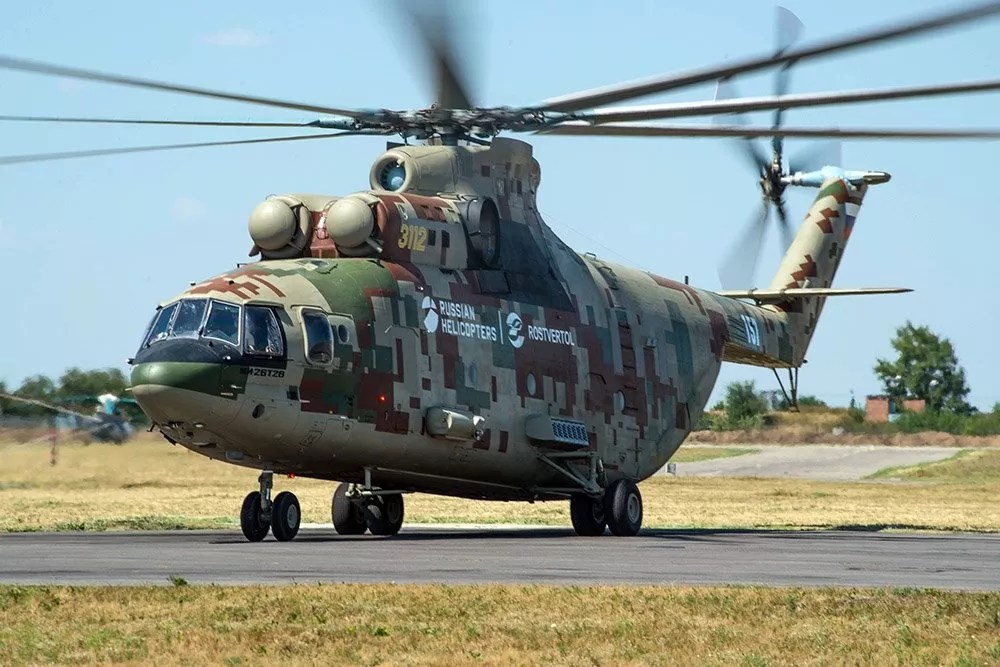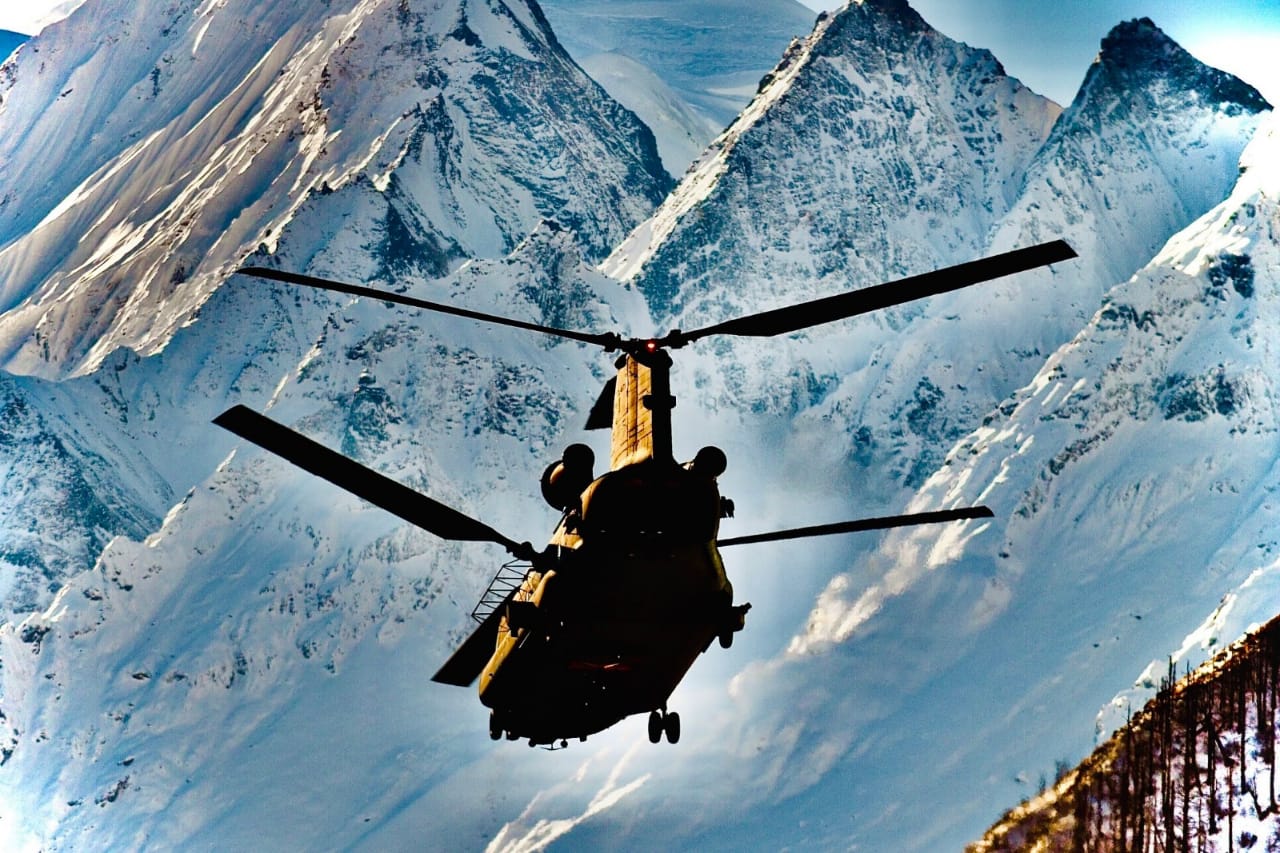Russian Aerospace Forces have received a modernized version of the Mi-26, the world’s largest and most powerful heavy-lift helicopter. The ‘T2V’ variant sports a new engine, electronics, avionics, an advanced communications suite, navigation equipment, better ergonomics, improved pilot infrastructure, and the latest satellite communications equipment.
India, too, used three Mi-26s, which were bought from the Soviet Union in May 1986. However, the aircraft are inoperational owing to a lack of spares and logistical issues.
This is the third popular variant of the famous helicopter, with the first variant being the ‘T’ and the other two designated the Mi-26T2 and Mi-26T2V.
The helicopter has so far set 14 international records, including lifting records: 25 tons to a height of 4,100 meters, 20 tons to a height of 4,600 meters, 15 tons to a height of 5,600 meters, and 10 tons to a height of 6,400 meters.
Advanced Variant Of World’s Biggest Helicopter With Largest Haul
According to a report in Rossiyskaya Gazeta, the Russian military has received a single Mi-26T2V. “The aircraft fleet of the Army aviation is updated annually due to the arrival of new and modernized aircraft,” it quoted the head of the army aviation, Igor Romanov. Referring to the war in Ukraine, it said one Mi-26 can lift “82 paratroopers with a full set of weapons.”

The report also mentioned variants of helicopters like the Ka-52M Alligator, Mi-28NM Night Hunter, Mi-8AMTSh-V Terminator, and Mi-8MTV-5M helicopters being “sent to combat units.”
This reflects the massive defense industrial effort within Russia to hike up defense production and quickly finish existing projects in anticipation of what it perceives as an inevitable war with the US and NATO.
The T2 variant was an advancement over the Mi-26T. It has a “glass cockpit” with five multifunctional color LCDs, control panels, redundant electromechanical instruments, and a more modern digital communications suite.
An onboard television device is used to visually monitor the cargo on the external sling during the daytime. This allows the helicopter to perform instrument flights following international regulations worldwide and reduces the crew size from five to three.
The Mi-26T2V, meanwhile, possesses even more advanced avionics systems. This new navigation system allows automatic flight along the route, “exit to a predetermined point, landing approach, as well as pre-landing maneuvering and return to the main or alternate airfield,” RG added. In addition, the Mi-26T2V has also received the Vitebsk airborne defense complex, night vision goggles, and new energy-absorbing seats.
Moreover, sporting the Vitebsk-25 Electronic Warfare (EW) system — also installed on attack helicopters like the Kamov Ka-52 Alligator — suggests the Mi-26T2V will be employed for airlifts or heli-drops in frontline ‘hot’ battlezones too, and not just in the rear. The Vitebsk can jam and deflect shoulder-fired Man-Portable Air Defense (MANPAD).
Military Utility For Russia & India
The military-strategic situation requiring the gigantic Mi-26 to fly over or land in the middle of contested airspace would be interesting. It would be an extreme and severe, full-scale clash between large armies and a massive land war that would warrant large and rapid reinforcement of troops and material on the frontlines.
The only conceivable scenario to see the Mi-26 used this way is an all-out collision between Russia and the North Atlantic Treaty Organization (NATO) in Europe, spread across nearly a 2,500-kilometer (1,600-mile) battlefront. It can transport up to 82 paratroopers with a complete set of weapons.
India’s Mi-26 helicopters, with the 126 Helicopter Unit in Chandigarh, meanwhile, remain grounded owing to maintenance issues. The IAF procured the US-made CH-47 Chinooks, which have a lesser payload capacity than the Mi-26s.
The last time India used the Mi-26s was during the September 2014 Kashmir floods, where the helicopters ferried everything from heavy machinery to relief material. The aircraft has distinguished itself by undertaking many underslung operations in J&K during the Kargil war, the plains of central India, and the seas of Kutch.
It has also landed at Daulat Beg Oldie (DBO) and other high-altitude airfields carrying wheeled vehicles, field guns, medium- and heavy-duty generators, mobile satcom stations, and bulldozers.

Lifted Two Chinooks In The Afghan War
But the moment of irony came in the spring of 2002 when a Mi-26 was pressed into service to recover and lift two US Army MH-47E Chinook helicopters from a mountain in Afghanistan.
The Chinooks, operated by the 160th Special Operations Aviation Regiment, had been employed in Operation Anaconda, an effort to drive al Qaeda and Taliban fighters out of the Shahi-Kot Valley. They found themselves stranded on the slopes above Sirkhankel at altitudes of 2,600 meters (8,500 ft) and 3,100 meters (10,200 ft).
- The author can be reached at satamp@gmail.com
- Follow EurAsian Times on Google News





